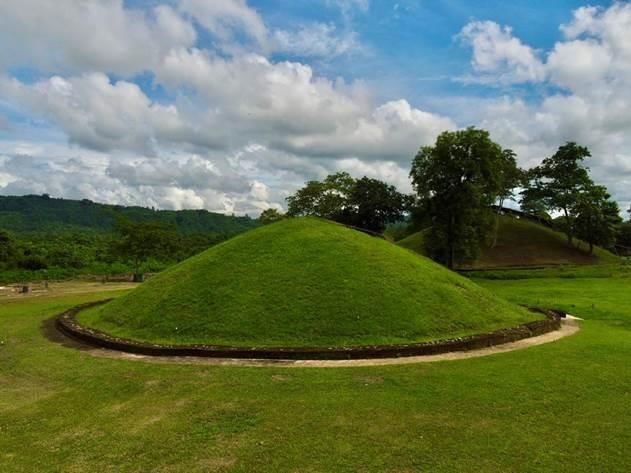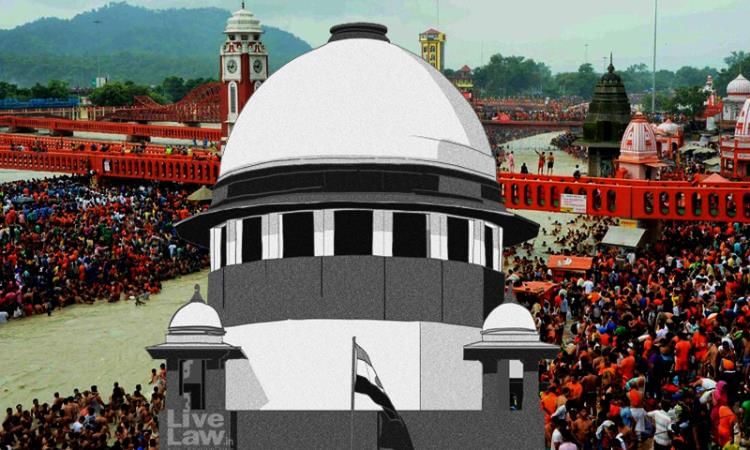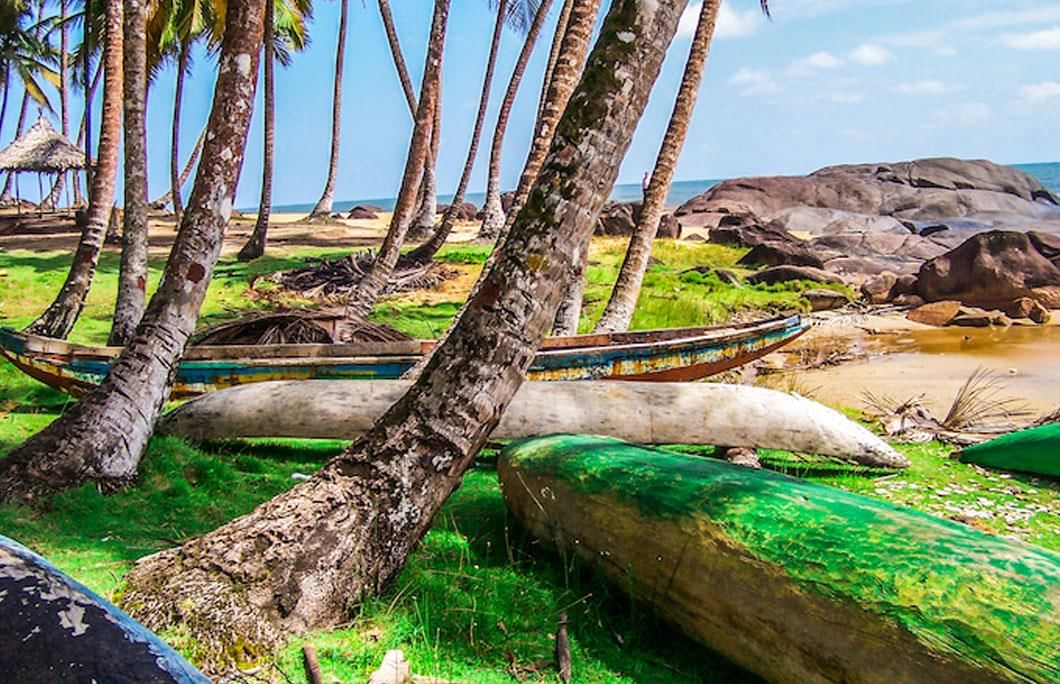UPSC Daily Current Affairs: 27 July 2024 | Current Affairs & Hindu Analysis: Daily, Weekly & Monthly PDF Download
GS3/Economy
Using Children’s Personal Data Legally and Securely
Source: The Hindu
Why in news?
The Indian school education system is one of the most expansive and intricate ecosystems globally, comprising approximately 15 lakh schools, 97 lakh teachers, and nearly 26.5 crore students from pre-primary to higher secondary levels.
- Adherence to data privacy and minimisation principles is crucial due to the sensitive nature of children’s personal data and the diverse backgrounds of stakeholders in the system.
Key Functions of Unified District Information System for Education Plus (UDISE+)
- Data Collection, Management and Real-Time Updates
- Resource Allocation, Monitoring and Evaluation
- Educational Trends Mapping and Policy Formulation
The Linkage of UDISE+ and the National Education Policy 2020 and Its Benefits
- UDISE+ aligns with the National Education Policy (NEP) 2020, integrating the Automated Permanent Academic Account Registry (APAAR) to track each student's educational journey accurately.
- Enhancing Ease of Schooling
- Collaborations with Ed-Tech Companies
Concerns Surrounding UDISE+ and Solution
- Data Privacy and Security
- Solution: Adherence to SC’s Puttaswamy Judgement
- The Need for Specific Protocols to Handle Children’s Data in Indian Education System
No Clarity on Legal Responsibilities
- Lack of Specific Mechanism for Sharing Children’s Data
- No Clarity on Legal Responsibilities
Conclusion
- The Indian school education system requires robust mechanisms to manage and protect the personal data of students.
- Implementing standard operating procedures under a comprehensive governance framework is essential for preserving data authenticity and enforcing legal obligations.
GS1/History & Culture
Moidams Inscribed in the UNESCO World Heritage List as India's 43rd Entry
Source: The Hindu
Why in news?
In an important cultural achievement for India, "Moidams – the Mound-Burial System of the Ahom Dynasty" from Assam has been officially inscribed on the UNESCO World Heritage List under the category Cultural Property.
- The announcement was made during the ongoing 46th session of the World Heritage Committee at New Delhi.
- This makes it the 43rd property from India to be included in the list.
- This is the third World Heritage Property from Assam, following Kaziranga National Park and Manas Wildlife Sanctuary (both inscribed under the Natural category in 1985).
- India became a member of the World Heritage Committee from 2021-25 and is currently hosting its first-ever session since joining UNESCO's World Heritage Convention of 1972.
- The 46th session of the World Heritage Committee started on July 21st and will last until July 31st at Bharat Mandapam in New Delhi.
About
- The Ahoms were one of India's longest-reigning dynasties, with a kingdom that stretched from modern-day Bangladesh to deep inside Burma.
- The Ahom rule lasted for about 600 years until the British annexed Assam in 1826.
- They were known for their administrative skills and valor in battle, with enduring cultural significance in Assam.
- As per historians, Ahoms represented a time of unity for the Assamese people, especially in their resistance against the Mughal empire.
Celebration in recent years
- Last year, the 400th birth anniversary of Ahom general and folk hero Lachit Borphukan was celebrated in New Delhi from November 23 to 25.
- PM Modi emphasized Borphukan's bravery and leadership, mentioning his focus on the welfare of the people.
- Even though the Ahoms originated from ruling families in South China, they are now known as local Indian rulers with a significant legacy.
The Moidams
- The Moidams (also Maidams) represent the burial mounds used by the Ahom rulers from the 13th to the 19th century.
- These mounds, found in Assam's Charaideo district, resemble the tombs of ancient Chinese emperors and the pyramids of Egyptian pharaohs.
- Essentially, a Moidam is a raised earth mound covering the graves of Ahom royals and nobility.
Location
- While Charaideo exclusively contains moidams of Ahom royals, other moidams of aristocrats and chiefs can be found scattered across Eastern Assam, in the region between the towns of Jorhat and Dibrugarh.
Features
- Charaideo moidams are burial sites for Ahom kings and queens, similar to pyramids, located in Assam.
- These structures feature one or more chambers in a vault, topped by a hemispherical earthen mound covered in grass.
- A pavilion, called the chow chali, sits atop the mound, which is encircled by a low octagonal wall with one entrance.
- Unlike Hindus who typically cremate their dead, the Ahoms, who trace their origins to the Tai people, practiced burial.
- The height of a moidam reflects the power and stature of the person buried within.
- Within these chambers, the deceased king was interred alongside items needed for the "afterlife," as well as servants, horses, livestock, and even their wives.
- The burial practices of the Ahoms bear a resemblance to those of ancient Egyptians, earning the moidams the nickname "Pyramids of Assam."
- The name "Charaideo" comes from the Tai Ahom words "Che-Rai-Doi," meaning "a shining town situated on a hilltop."
- It was the first capital of the Ahom kingdom, established in 1253 AD by King Sukaphaa.
- Sukaphaa was buried there in 1856, and it became the chosen resting place for subsequent Ahom royals.
- Though the Ahoms changed capitals several times over their 600-year rule, Charaideo remained a symbolic and ritual center due to its historical significance.
- Today, the moidams of Charaideo are major tourist attractions.
GS2/Polity
Kanwar Yatra - Supreme Court Extends Stay on Directives To Eateries To Display Names
Source: The Tribune
Why in news?
The Supreme Court has extended the interim order staying the directives of the Uttar Pradesh and Uttarakhand governments that the eateries along the Kanwariya pilgrim route must display the names of the owners and the staff.
The stay order will continue till August 5, the next hearing date.
Background of the case
- The Kanwar Yatra began on July 22 and will continue until August 19.
- Previous "law-and-order situations" have arisen due to shop names causing confusion among the Kanwariyas, who follow a strictly vegetarian diet.
Key takeaways from the hearing
- The notice by Uttar Pradesh's Muzaffarnagar district police directing hotels, dhabas, and shops on the route of the Kanwar Yatra to display the names of their owners and employees has been challenged in court.
- Petitioners argue that the directive targets Muslim-owned businesses, potentially leading to economic consequences and discrimination.
- The Supreme Court has prohibited the enforcement of the public notice until further hearing.
Legal basis for the directions issued by police
- Police directives asked shops to "voluntarily display" the names of their owners and employees.
- The court noted concerns that the police actions may have overstepped their legal authority.
- The court will need to determine if any law grants the police and state government the power to issue such directions.
Police directives and shopkeepers' right to privacy
- Concerns have been raised regarding the right to privacy of shop owners and employees.
- The court must evaluate whether requiring businesses to publicly disclose names violates their privacy rights under the Constitution.
Directive issued by the Muzaffarnagar district police
- The directive has sparked debates on discrimination and potential economic boycotts of certain communities.
- Petitioners argue that the directions could lead to discrimination based on religion and caste.
Onus on apex court
- The court must assess the legal foundation for the police and state government's directives to shopkeepers.
- The right to privacy under Article 21 of the Constitution will be a key consideration in this case.
SC guidelines for exercising power under Section 144
- In 2012, the Supreme Court established guidelines for exercising power under Section 144.
- Actions by public authorities must be within legal authority and deemed reasonable.
Question of Discrimination
- The court will need to evaluate whether the directions violate constitutional provisions on discrimination.
- The court will consider if the requirement to disclose names constitutes discrimination against shop owners and employees.
Article 15(1) of the Constitution
- The court will assess whether the directions based on identity constitute discrimination against specific groups.
- The court will need to determine if the directions violate the rights of individuals based on identity.
GS3/Economy
Govt to form Inter-Ministerial Core Group on Employment
Source: Indian Express
Why in news?
Union labour minister chaired an inter-ministerial roundtable meeting on capturing and creating a central database on employment.
Employment in India:
Employment in India is a multifaceted issue, influenced by the country's diverse economy, demographic trends, and evolving industrial landscape.
Current Employment Trends:
- India's labor market is characterized by a large informal sector, significant rural employment, and a burgeoning services industry. Key trends include:
- Informal Sector Dominance: Over 80% of India's workforce is employed in the informal sector, which includes agriculture, construction, and small-scale industries. This sector often lacks job security, benefits, and consistent income.
- Rural Employment: A substantial portion of India's population still relies on agriculture for their livelihood. As per Government data, about 65 percent of the people in India are engaged in agriculture and allied activities directly.
- Growth of Services Industry: The services sector, including IT, finance, and retail, has seen significant growth, contributing to job creation in urban areas and improving India's global economic standing.
Challenges w.r.t. Employment in India:
- India's employment scenario faces several challenges that need to be addressed to ensure sustainable growth:
- Unemployment and Underemployment: Despite economic growth, unemployment remains a concern, particularly among the youth and educated populations. Underemployment, where individuals work in jobs that do not fully utilize their skills, is also prevalent.
- Skill Gap: There is a notable gap between the skills possessed by the workforce and those demanded by employers. This mismatch hinders productivity and limits economic potential.
- Job Quality: Many jobs in India, especially in the informal sector, are characterized by poor working conditions, low wages, and lack of social security, impacting the overall quality of life.
Key Government Initiatives:
- Skill India Mission: It was launched in 2015 with an aim to train over 400 million people in different skills by 2022, enhancing employability and bridging the skill gap.
- Pradhan Mantri Mudra Yojana: Launched in 2015 to provide loans up to Rs. 10 lakh to the non-corporate, non-farm small/micro-enterprises.
- Make in India: Encourages domestic and international companies to manufacture in India, creating jobs in manufacturing and related sectors.
- Mahatma Gandhi National Rural Employment Guarantee Act (MGNREGA): Provides legal guarantee for at least 100 days of wage employment in rural areas, promoting livelihood security.
Suggestions / Way Ahead:
- Economic Diversification: Expanding beyond traditional sectors to include emerging industries like renewable energy, biotechnology, and digital services can drive job creation.
- Educational Reforms: Aligning educational curricula with market demands and promoting vocational training can prepare the workforce for future challenges.
- Technological Integration: Embracing technology in various sectors can enhance productivity and create new job opportunities, particularly in tech-driven fields.
Latest Employment Data for India:
- According to PLFS and RBI's KLEMS data, India has generated more than 8 crore (80 million) employment opportunities from 2017-18 to 2021-22. This translates to an average of over 2 crore (20 million) employment per year, despite the world economy being hit by the COVID-19 pandemic during 2020-21.
Govt to form Inter-Ministerial Core Group on Employment:
- Union Labour Minister chaired an inter-ministerial meeting focused on creating a central employment database to integrate various employment data sources for a comprehensive view of employment generation in India.
- The meeting involved 19 union ministries and industry associations aiming to establish systematic data recording on employment resulting from government schemes, programs, and projects.
- Minister emphasized the need for a core group comprising different ministries, departments, and industry to build synergies and integrate efforts currently existing in silos.
- He also highlighted the industry's demand for a skilled workforce, urging industry bodies to offer internships to young people to prepare them with adequate skills and professional qualifications.
- This initiative aligns with recent Union Budget proposals related to employment, internships, and skilling.
GS3/Economy
Promoting Affordable Cancer Treatment in India
Source: Business Standard
Why in news?
In her Budget 2024-25 speech, the Finance Minister announced customs duty (which was earlier ~10%) exemptions on 3 targeted cancer drugs - trastuzumab deruxtecan, osimertinib, and durvalumab. The decision is likely to make these drugs more accessible to Indian patients, and reduce the overall cost of cancer therapies.
What is the Cancer Profile in India?
- Cancer is a disease in which some of the body’s cells grow uncontrollably and spread to other parts of the body.
- Abnormal or damaged cells grow and multiply, sometimes forming tumors that can be cancerous or not cancerous.
- India has seen a rise in cancer cases, with an estimated 14.6 lakh new cases in 2022.
- Deaths due to cancer also increased, reaching an estimated 8.08 lakh in 2022.
What are Some of the Targeted Cancer Therapies?
- Targeted cancer drugs attack only cancer cells, leaving normal cells unaffected.
- They have better outcomes and fewer side effects compared to traditional chemotherapy.
- Immunotherapy trains the immune system to find and attack cancer cells.
About the 3 Custom Duty Exempted Targeted Cancer Drugs
- Trastuzumab deruxtecan: It is an antibody-drug conjugate used for breast cancer treatment.
- Osimertinib: Expensive drug used for lung cancer treatment.
- Durvalumab: Immunotherapy treatment for various cancers.
Regulation of Prices of These Cancer Drugs in India
- Trastuzumab is a scheduled drug under NLEM 2022 with a fixed ceiling price.
- Osimertinib and Durvalumab are non-scheduled medicines monitored by NPPA to control price increases.
What will be the Impact of the Customs Duty Exemptions?
- Customs duty exemptions are expected to reduce the financial burden on cancer patients and families in India.
- Around one lakh patients may benefit from these accessible cancer drugs.
GS-I/Geography
Key Facts about Liberia
Source: Indian Express
Why in News?
A group of senators in Liberia, situated along the coast of western Africa, has proposed to relocate the country’s capital city Monrovia due to recurring flash floods.
About Liberia:
- Location: It is situated on the western coast of Africa.
- Unique Status: Liberia stands out as the sole African nation to have never experienced colonial domination, making it the oldest republic in Africa.
- Bordering Countries: Liberia shares its borders with Sierra Leone to the northwest, Guinea to the north, Côte d’Ivoire to the east, and the Atlantic Ocean to the south and west. The Atlantic Ocean forms the country's border to the south-southwest.
- Distinctive Landmarks: Liberia features prominent geographical points such as Cape Mount in the northwest, Cape Mesurado in Monrovia, and Cape Palmas in the southeast.
- Key Rivers: The major rivers shaping Liberia's boundaries include the Mano and Morro Rivers in the northwest, and the Cava River in the east and southeast.
- Natural Resources: Liberia is rich in various natural resources like iron, diamonds, gold, lead, manganese, graphite, and cyanite.
GS-III/Economy
Steel Import Monitoring System’ 2.0 Portal
Source: PIB
Why in News?
Recently, the Union Minister of Steel and Heavy Industries, launched SIMS 2.0, the upgraded Steel Import Monitoring System.
About Steel Import Monitoring System’ 2.0 Portal:
- It includes connecting with different government websites using APIs to improve quality control and make processes more efficient.
- The website has a strong data input system to ensure accurate and real data, which helps in being transparent and accountable.
- By combining different databases, stakeholders can identify risky areas for better risk management.
- For instance, if an imported shipment claims to be from an unlicensed source by BIS, the Ministry can advise against its import. Detailed data helps Customs analyze and manage risks related to steel imports.
- The Steel Import Monitoring System (SIMS) started in 2019 and has been crucial in providing detailed data on steel imports to local industries.
- Following industry suggestions, the Ministry updated the portal to create a more efficient SIMS 2.0, a big advancement in overseeing steel imports and supporting local steel production.
- Importance: Detailed data not only guides policy-making but also highlights areas for development and expansion in the local steel sector.
GS-III/Science and Technology
GROWTH-India Telescope
Source: NDTV
Why in News?
Recently, the GROWTH-India Telescope made a remarkable observation, capturing a 116-meter, building-sized asteroid as it made its closest approach to Earth.
About GROWTH-India Telescope
- It's the first robotic optical research telescope in India.
- The main job of this telescope is to observe sudden explosions and changing sources, including objects near Earth.
- Location: The telescope is placed at the Indian Astronomical Observatory site in Hanle, Ladakh. This site sits at 4500 meters above sea level, making it one of the highest observatory spots globally and among the best places for telescopes in the nation.
- It is situated alongside the Himalayan Chandra Telescope (HCT), the gamma-ray array telescope (HAGAR), and the imaging Cherenkov telescope (MACE) at this location.
- It was built through a collaboration between the Indian Institute of Astrophysics (IIA) and the Indian Institute of Technology Bombay (IITB), with backing from the Department of Science and Technology (DST) and the Indo-US Science and Technology Forum.
- The GROWTH-India project is part of a global network of observatories named the Global Relay of Observatories Watching Transients Happen (GROWTH).
- Its goal is to constantly monitor intriguing celestial occurrences. The network's teamwork ensures that observations are not interrupted by daylight, enabling thorough data collection.
|
44 videos|5359 docs|1133 tests
|
FAQs on UPSC Daily Current Affairs: 27 July 2024 - Current Affairs & Hindu Analysis: Daily, Weekly & Monthly
| 1. What are the guidelines for using children's personal data legally and securely? |  |
| 2. How is Moidams inscribed in the UNESCO World Heritage List as India's 43rd entry significant? |  |
| 3. What is the significance of the Supreme Court extending the stay on directives to eateries to display names during Kanwar Yatra? |  |
| 4. What is the purpose of the Inter-Ministerial Core Group on Employment formed by the government? |  |
| 5. How does the Steel Import Monitoring System 2.0 Portal contribute to regulating steel imports in India? |  |
















